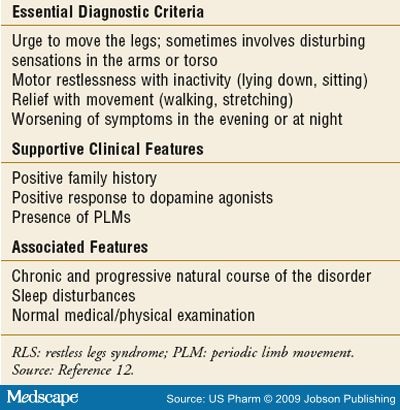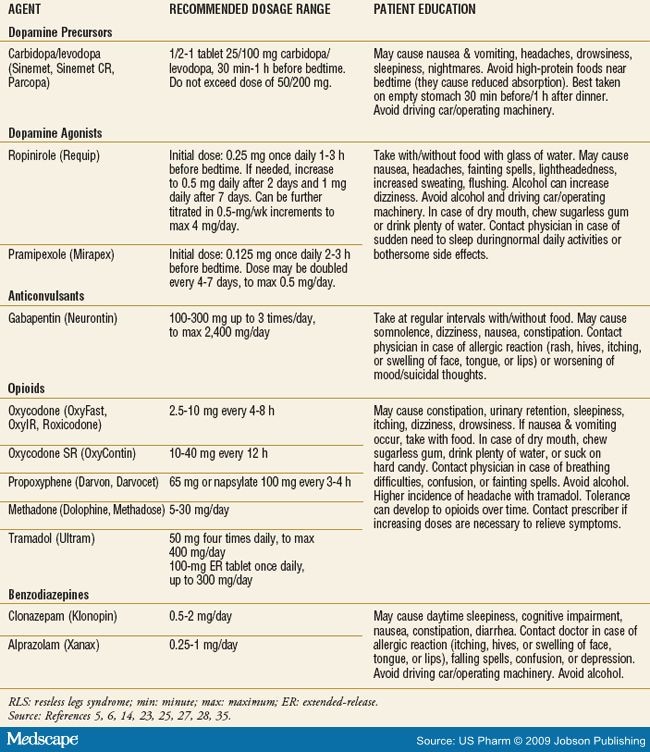Introduction
Restless legs syndrome (RLS) is a common sensorimotor disorder of the central nervous system. It is characterized by an irresistible urge or need to move the limbs that occurs as a result of uncomfortable limb sensations. Although RLS usually starts in the legs, it can spread to other parts of the body, such as the arms or torso. RLS sufferers often describe the disorder as feeling like water flowing inside the legs, "bugs in the bones," or electricity in the legs. These symptoms may be present all day, but usually worsen during periods of inactivity and in the evening. People with RLS usually must move their limbs for complete or partial relief of the uncomfortable sensations. At night, RLS often is associated with periodic limb movements (PLMs), which can cause sleep problems and also make it difficult to perform sedentary activities such as sitting comfortably in a car or on an airplane for extended periods.
The cause of RLS remains unclear, but research suggests that impaired dopamine activity in the brain due to iron insufficiency may induce RLS in people with a genetic predisposition. RLS can be classified as primary or as secondary due to another medical condition, such as end-stage renal disease (ESRD) or pregnancy. Dopamine agonists like ropirinole and pramipexole are first-line therapy for RLS with daily symptoms. Alternative therapies are available for refractory cases or persistent symptoms. This article explores the prevalence, etiology, and diagnosis of RLS, as well as available treatments.
US Pharmacist. 2009;34(1):24-29. © 2009 Jobson Publishing
Cite this: Restless Legs Syndrome: A Common, Underdiagnosed Disorder - Medscape - Jan 01, 2009.








Comments